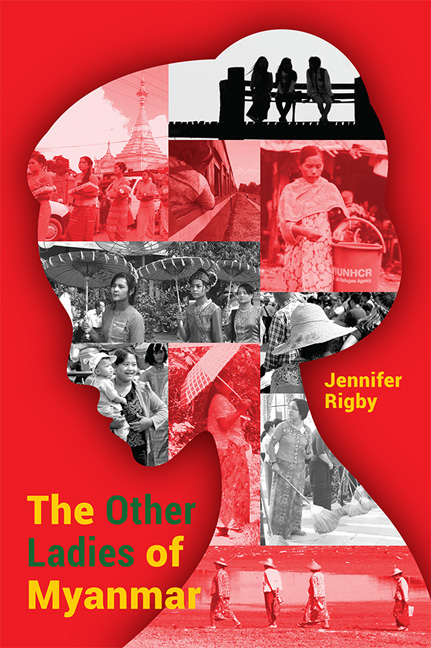Book contents
- Frontmatter
- Dedication
- Contents
- Preface
- Acknowledgements
- Introduction
- Timeline
- 1 The Activist: Cheery Zahau
- 2 The Feminist Buddhist Nun: Ketu Mala
- 3 The Survivor: Mi Mi
- 4 The Businesswoman: Yin Myo Su
- 5 The Environmental Campaigner and Princess: Devi Thant Cin
- 6 The Artist: Ma Ei
- 7 The Refugee Sexual Health Nurse: Mu Tha Paw
- 8 The Rohingya and Human Rights Champion: Wai Wai Nu
- 9 The Farmer: Mar Mar Swe
- 10 The Pop Star: Ah Moon
- 11 The Politician: Htin Htin Htay
- 12 The Archer: Aung Ngeain
- Conclusion
- About the Author
- Frontmatter
- Dedication
- Contents
- Preface
- Acknowledgements
- Introduction
- Timeline
- 1 The Activist: Cheery Zahau
- 2 The Feminist Buddhist Nun: Ketu Mala
- 3 The Survivor: Mi Mi
- 4 The Businesswoman: Yin Myo Su
- 5 The Environmental Campaigner and Princess: Devi Thant Cin
- 6 The Artist: Ma Ei
- 7 The Refugee Sexual Health Nurse: Mu Tha Paw
- 8 The Rohingya and Human Rights Champion: Wai Wai Nu
- 9 The Farmer: Mar Mar Swe
- 10 The Pop Star: Ah Moon
- 11 The Politician: Htin Htin Htay
- 12 The Archer: Aung Ngeain
- Conclusion
- About the Author
Summary
MI MI was riding her bike home from work with her father in Thanbyuzyat, Mon state, when it happened.
It was dark.
“When I turned around, I saw his face,” she says. “I was talking to my dad while we rode home on our bikes. I knew there was a bike behind us, but I hadn't turned around yet to see who it was. I thought it was just people on their way home like us.
“Then there was a splash. The first splash was on my chest. I turned around to see what it was. Then I saw his face. He splashed the second time right to my face.”
The liquid that was splashing was acid, and the “he” splashing it was Mi Mi's ex-boyfriend.
“I cannot find the words to describe the pain,” says Mi Mi.
I meet Mi Mi (she does not want to give her real name) in September 2016, six months after the attack, and her injuries are still horrific.
Seriously scarred down one side of her face, she has lost one eye and nearly her ear as well, and her arms and chest are also badly damaged. The injuries are blue and purple and vivid. Her father was also hit during the attack, on his back.
Mi Mi and I meet in a Mon monastery in the centre of Yangon. She stays here when she comes into the country's biggest city for treatment, around once a month.
It's a warm day at the end of rainy season, but it's not too hot, and as we enter the red and gold monastery, my translator and I pass men outside playing chinlone, a kind of keepy-uppy/volleyball with a straw ball that is extremely popular in Myanmar. We're welcomed in by a friendly older lady and taken behind a curtained-off section of the monastery. We later find out this is because Mi Mi does not want to go outside, at least not while there are people there.
- Type
- Chapter
- Information
- The Other Ladies of Myanmar , pp. 24 - 32Publisher: ISEAS–Yusof Ishak InstitutePrint publication year: 2018



